Review: Motorola Moto Z2 Force
Aug 2, 2017, 11:00 AM by Eric M. Zeman
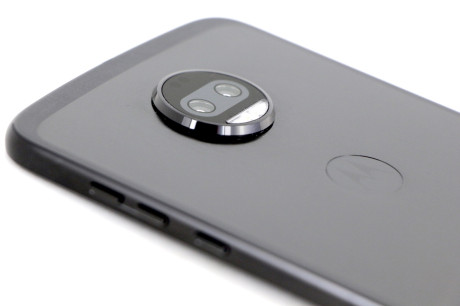
The Moto Z2 Force is a semi-rugged — and yet stylish — flagship smartphone from Motorola. This sleek handset boasts dual cameras, top specs, and a nearly unbreakable "ShatterShield" screen. Moreover, it is fully compatible with Motorola's Moto Mods ecosystem of modular accessories and comes with the latest Android software innovations from Motorola. The Z2 Force aims high and will be widely available from U.S. carriers. Despite moving the needle forward, Motorola still managed to bungle at least one aspect of this phone. Here is Phone Scoop's in-depth review.
Hardware
Is It Your Type?
Motorola's 2017 flagship, the Moto Z2 Force, merges the best parts of its 2016 smartphones into a single handset. If you are invested in Motorola's ecosystem of Moto Mods accessories — or just want a really good high-end phone — the Moto Z2 Force is a fine all-around performer.
Body
The external elements that differentiate last year's Moto Z phones from this year's are few and far between. For all intents and purposes, these phones share most physical design characteristics and basic features, such as their footprint and compatibility with Moto Mods accessories. Only the internal specs, real-world performance, and price tags truly set them apart. The latter is likely the only one of these that matters to consumers standing in a wireless retail shop on any given Saturday. To the naked eye, they all look almost the same.
The 2016 Moto Z was Motorola's design centerpiece, an impossibly thin smartphone that introduced the Moto Mods ecosystem. It was joined by the Moto Z Force, a tougher — but thicker and heavier — smartphone with Motorola's unbreakable ShatterShield technology. Together they delivered a one-two punch, presenting consumers with an impossible choice: sleek and sexy, or brawny and long-lasting.
The Moto Z2 Force, this year's flagship, splits the middle.
Motorola told us that more people opted for the tougher Z Force last year. Given that broken screens are the most common damage sustained by smartphones, the idea of a hardened display appealed to people more so than the razor-thin profile of the Z. Motorola is thus moving forward with a single Z-branded flagship rather than two.
The Z2 Force is a high-end smartphone made mostly of metal. The phone boasts a 2.5D curved front, a rounded metal frame, and a new metal rear plate. I really like the chamfered edges of the frame and the more curved shape that, together, make the Z2 Force comfortable against the palm of your hand. The design of the rear panel, installed within a polycarbonate sub frame, is much like that of the mid-range Z2 Play. The Z2 Force, however, has higher-quality series 7000 aluminum on the rear that is made all the more attractive with a brushed texture. Notably, the Z2 Force does away with the fussy glass panel that covered the rear of last year's phone. This simplifies the design while at the same time unifies its family resemblance with that of the Z2 Play. The phone comes in black, gray (exclusive to T-Mobile), and gold, and each color has its own appeal.
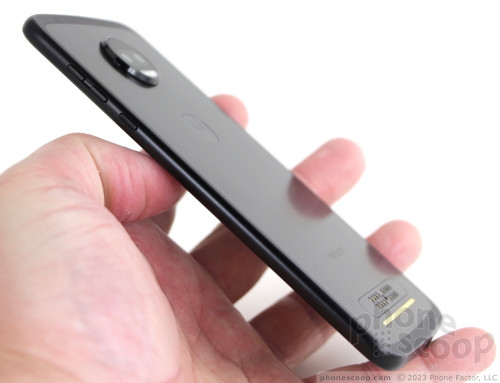
The Z2 Force is smaller and lighter than this year's Z2 Play and last year's Z Force, but that's not saying much. The difference in size here is measured in hundredths of an inch. The Z2 Force is still more than 6 inches tall and about 3 inches wide. The thickness is an appealing 6.1mm, which is beefier than the Z, but trimmer than the Z Force. If there's one dimension that may be off-putting to potential purchasers, it is probably the width. Any phone that stretches across 3 inches is harder to hold no matter how thin a profile it boasts. The Z2 Force may be too large for some, and is often a two-handed phone even for those with larger hands. I found the phone was a fine traveling companion; I never had any trouble cramming it into pockets, packs, or bags.
The materials and build quality are about the best I've seen from Motorola. The plastic and metal body pieces look and feel great. I really like the way the 2.5D panel fits into the metal frame. The same is true of the polycarbonate band that affixes the rear metal plate to the chassis. Motorola eliminated the uncomfortable, sharp edges from last year's model. The Z2 Force stops short of being as impressive as the LG G6 or Samsung Galaxy S8, (both of which have better designs, in my opinion,) but it's clearly a well-made, high-quality piece of hardware.
The Z2 Force carries over the shape of its predecessors, which means it has broadly rounded corners and slightly curved top and bottom edges. The user-facing camera is fairly obvious off to the left of the earpiece, while the two-tone LED flash really stands out to the right.
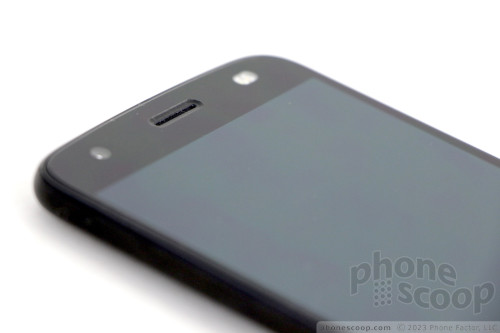
I wish the bezels around the screen were much narrower. They're not bad along the sides, but the non-screen areas above and below the display are much larger than the corresponding areas on the LG G6 and Samsung S8. Motorola has yet to adopt the 2:1 aspect ratio like its competitors. When asked why not, Motorola said it is still evaluating what types of displays could be compatible with the body shape and size that the Moto Mods system requires. Moto didn't rule out 2:1 screens, but seems in no hurry to adopt them.
Like other Moto phones this year, the Z2 Force's fingerprint reader, just below the display, doubles as a navigation tool. You'll need to turn the feature using the Moto App. Once activated, the fingerprint reader acts like a trackpad and allows you to navigate back or access the app switcher when you swipe left or right, respectively. When you turn on the fingerprint reader navigation controls, the screen-based nav buttons go away. This lets you recover screen real estate, but using the fingerprint reader / trackpad for on-screen navigation really takes practice to master.
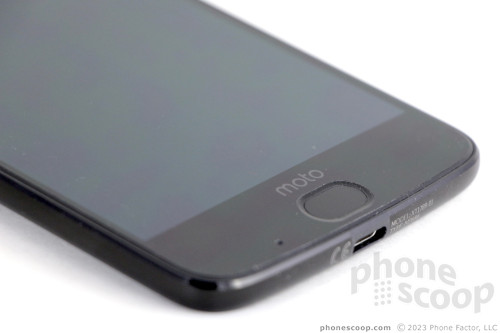
The remaining physical controls are tucked high on the right edge of the phone. The lowest of the three is the screen lock key. It has a ridged texture to help differentiate it from the other two buttons. I'd call the button a little small, but the travel and feedback are very good. The volume controls are separate buttons above the screen lock key. Motorola put a significant gap between the two, which helps your thumb effortlessly tell them apart. These buttons have smooth profiles and good travel and feedback.
The tray for the SIM and memory cards is on the top edge. The left edge is free from controls. The USB-C port is located on the bottom. There is no 3.5mm headphone jack.
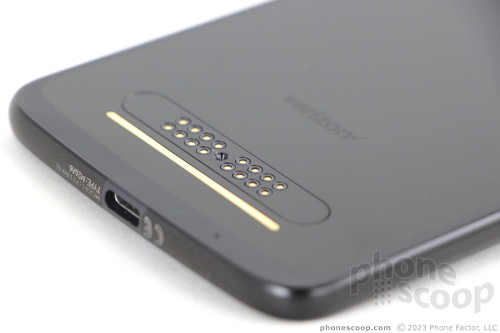
The rear panel is much more attractive than last year's phone, which had a weird, ridged glass panel that I didn't like. The brushed aluminum of the Z2 Force is far more appealing. The camera module has the same size and shape of other Moto Mod-compatible phones, but it has entirely new imaging components within (two lenses and a two-tone flash.) Just like the Z2 Play, the stylized "M" Motorola logo on the Z2 Force is not etched into the metal; rather, it is a plastic insert that ensures the NFC radio can function properly. Motorola did a good job matching the appearance of the plastic insert to that of the surrounding metal.
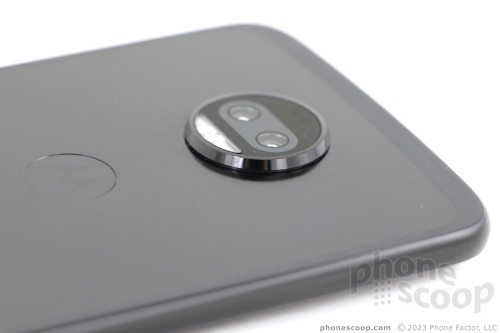
Motorola's proprietary magnetic module connector is positioned near the bottom of the rear panel. The magnets feel incredibly strong and clingy, though it is still easy to pry Mods off when you want to. Both existing and new Mods fit on the Z2 Force perfectly and securely.
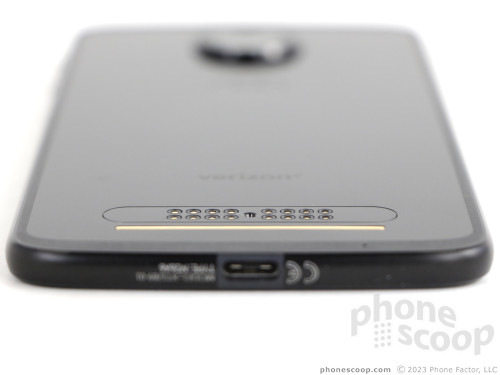
The phone is sealed up tight, so swapping the main battery is not going to happen. Motorola has dedicated battery Mods for those who fret about battery life.
The Z2 Force is not truly waterproof like the G6, S8, or iPhone 7, meaning it cannot sit in 3+ feet of water for 30 minutes. Instead, Motorola has coated the interior electronics with a water-resistant material. When asked about the Z2 Force's lack of full waterproofing, Motorola said the nano coating is protective enough to save the phone from splashing, sweat, rain, and even a really quick dunk in water. In other words, you can drop it in the pool and the phone should be okay if you immediately pull it out and dry it off. Motorola insists this is all the protection the Z2 Force needs from backyard shenanigans.
There's no question Motorola improved the hardware of the Z2 Force when compared to its predecessors. It tweaked the design in just the right ways to give the phone its own personality while keeping the character of the original series intact.

Screen
The Z2 Force has a 5.5-inch quad-HD screen. It's the same size and resolution of last year's phones, but relies on the latest ShatterShield technology from Motorola in order to form a break-proof display. ShatterShield relies on multiple layers of hardened aluminum and plastic. The first-generation ShatterShield appeared on the 2015 Droid Turbo 2 and was rather dim and unimpressive. Motorola has come a long way since then, as the Z2 Force's screen is clearer and brighter. The newest version of ShatterShield allowed me to drop the Z2 Force multiple times onto concrete without any breakage. I wouldn't make a habit of this behavior, but accidental drops shouldn't leave your wallet crying for mercy.
The plastic OLED screen on the Z2 Force is just as good as any leading quad HD display I've reviewed in recent memory. The size/resolution combination delivers razor-sharp text and graphics. Quad HD is the best resolution for VR (right now.) I installed Google's Daydream VR platform on the Z2 Force and it ran really well. I found the display to be plenty bright for indoor use, though you will have to crank it up to view it outdoors. Colors are a touch cool. Viewing angles are pretty good, with just a bit of blue shift when the phone is tilted left or or right.
Signal
The Z2 Force is going to be more widely available than the original, which was a Verizon exclusive. The Moto Z2 Force will be sold by most U.S. carriers (AT&T, Sprint, T-Mobile, U.S. Cellular, Verizon.) Motorola plans to offer unlocked versions of the phone, too, but the unlocked models will be specific for each carrier. In other words, there is no one global unlocked variant. Motorola explained that it had to build specific network technology into the phone for each of the major U.S. carriers in order to properly support forthcoming "Gigabit" LTE service. This means you can buy it unlocked, but you'll have to specify which carrier you use at the time of purchase. That's a bit confusing as far as I am concerned. The phone supports most U.S. LTE bands, including T-Mobile's newer Band 66.
That said, Motorola lent us a Verizon-branded version of the Moto Z2 Force and it performed really, really well. It always found Verizon's network and remained connected to LTE 4G without fail. I was able to make calls on the first dial, and the phone didn't miss any or drop any, even at highway speeds. The phone delivered some of the fastest data speeds I've seen in NYC in recent months. I downloaded 1 GB of app updates over the network in mere minutes. The phone was a data powerhouse. Streaming music via Spotify or video via YouTube TV was a great experience. I never saw any significant slow-downs, buffering, staggering, or low-res performance.
Sound
The Z2 Force is a very good voice phone. The earpiece of the Z2 Force does double duty: it handles regular calls and speakerphone calls. The calls I made via the earpiece were clear and free of distortion. Volume leaves a little to be desired. I was able to hear calls in a small room with a roaring air conditioner, but hearing calls on city streets or in a moving car seemed harder. Those I spoke to through the Z2 Force said I sounded "really good."
The speakerphone isn't quite as good. Voices come through the speaker a bit muffled and volume isn't the greatest. For example, I was better able to hear calls through the earpiece in that room with the air conditioner than I was via the speakerphone, even with the speakerphone volume all the way up. The speakerphone is also somewhat more prone to distortion at full volume. It does okay in a moving car.
Ringers and alert tones were able to get my attention most of the time. I missed several calls when I had the phone in silent mode due to the weak vibrate alert.
Battery
If the Z2 Force has one achilles heel, this is it. The Z2 Force has a relatively small 2,730 mAh battery. (Last year's Z Force had a 3,500 mAh power pack.) Motorola reduced the size of the battery in order to keep the phone's chassis nice and thin. This definitely has a cost.
The Z2 Force cannot make it through a full day under the most intense use. The Z2 Force called it quits by 9 or 10pm on days I played games, shot video, streamed music and movies, and spent lots of time scrolling through Twitter and Instagram. When I backed off some media consumption, the phone was able to get from breakfast to bedtime with some fumes left in the tank. Power users will likely not get a whole day of battery life from this phone. That's not so great.
There are two mitigating factors here.
First, Motorola says battery Mods are the most popular Moto Mods in the ecosystem. Motorola makes a swappable battery pack that adds an extra 3,300 mAh battery and supports rapid charging. I reviewed it earlier this year. It's slim, and delivers the goods when needed. You can use the phone from breakfast until happy hour with the Mod attached, pull the Mod off on the way to dinner, and still have enough power in the phone to take you to last call.
TurboPower Battery Mod
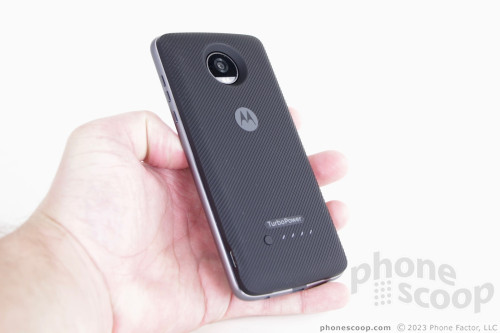
Second, the Z2 Force supports Motorola's TurboPower rapid charging. The company claims 15 minutes on the included charger will give you 8 hours of battery life. That's about right. TurboPower delivers a huge jolt of power in a very short time. What's more, the battery Mod also supports TurboPower, so you can use the Mod battery pack to top up quickly if needed.
By itself, the Z2 Force does not support wireless charging. But Motorola makes a Style Shell with Wireless Charging, which lets you add wireless charging to the handset via Moto Mod.
Style Shell with Wireless Charging
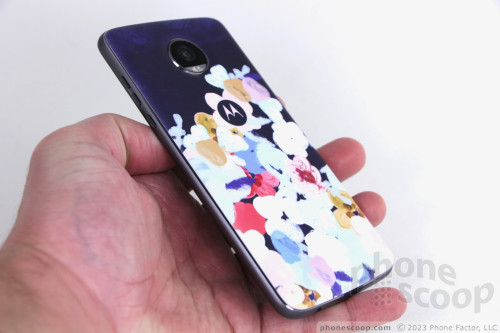
Bluetooth, GPS, NFC, WiFi
I didn't run into any issues with the Z2 Force's secondary radios. Bluetooth delivered swift connections to other devices, such as headsets and speakers. Phone calls sent to headsets and my car's hands-free system were decent, though not the best I've heard. The Z2 Force was able to push files to other phones and PCs. Music streamed to a Bluetooth speaker sounded very good.
Google Maps put the Z2 Force's GPS radio to effective use. The phone often pinpointed my location in a second or two, with accuracy as good as 10 feet. It doesn't get much better than that. The GPS radio and Maps worked in tandem for accurate real-time navigation. The Z2 Play is a fine navigation device when driving or walking around town.
Motorola appears to have vanquished whichever gremlins prevented me from fully using NFC on the Z2 Play, because NFC on the Z2 Force worked as expected. I was able to rely on the NFC radio to initiate Bluetooth pairing, data transfers between phones, and of course use Android Pay.
The Z2 Force has great WiFi.
Software
Editor's Note: The Moto Z2 Force runs identical software to the Moto Z2 Play, which Phone Scoop recently reviewed. Some portions of the following text have been carried over from that earlier review. Rest assured, we thoroughly tested every facet and feature of the Moto Z2 Force and updated everything unique to Motorola's latest phone.
Lock Screen
The Moto App now handles the ambient display on Motorola handsets and manages the lock screen and notifications.
The Moto Display function in the Moto App can wake the screen regularly with a list of the current notifications; show important notifications on the lock screen as they arrive; or leave the screen entirely dark. The behaviors are fully customizable, which is something I've long appreciated about Motorola smartphones.
The Z2 Force screen will wake when you double-tap the glass. It also adds a touch-and-hold feature for lock screen notifications so you can glean a bit more info, such as email sender and subject line.
If you press the screen lock button, the display wakes fully to show the clock, wallpaper, and notifications listed below the clock. There are also shortcuts to the Google Assistant and camera on this screen. You cannot customize the shortcuts.
The Z2 Force's fingerprint reader performed very, very well. I like the feel of the indented oval much better than that of the slightly raised square on last year's phone. It was quick to record fingerprints and consistent at recognizing fingerprints on the first try. When you're done using the phone, press the fingerprint reader to automatically put the display to sleep and lock the phone if you wish. That's cool.
Home Screens
The Z2 Force ships with Android 7 Nougat with minimal tweaks from Motorola. Owners can customize the typical stuff, such as wallpapers, widgets, and so on. The home screens behave as expected for an Android Nougat phone.
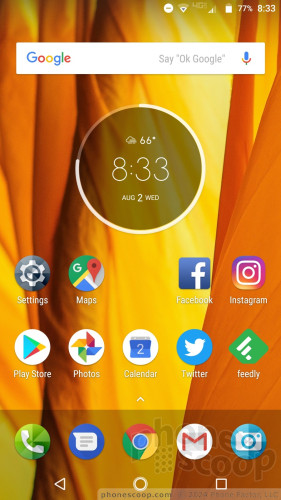
The app drawer is almost standard Android. It doesn't include a dedicated button on the home screen. Instead, you swipe up from the dock to bring up the app drawer, similar to Pixel phones. Apps are listed alphabetically in the drawer, with four app suggestions and a search bar lining the top. The Z2 Force trades the white background found in the Pixel app drawer for whatever wallpaper you have set for the home screen. The app drawer doesn't support folders, nor does it allow you to hide apps.
The notification shade, Quick Settings tool, and main settings screens are all standard Android, and work accordingly. There are no themes or other fancy interface tricks on board, which is fine as far as I am concerned.
Z2 Force Settings And App Drawer
As noted earlier, the fingerprint sensor doubles as a navigation pad and it is managed via the Moto App. You have to turn it on manually. I found it takes practice. The space in the button itself is rather small for the swiping gestures needed to navigate back or turn on the app switcher. Turning on the nav pad eliminates the on-screen nav controls, which frees up screen space. Some people may find the trade-off worth it.
There are plenty of Verizon-branded apps aboard, and a whole folder of Verizon stuff on the home screen. I'm annoyed to find un-deletable apps such as Verizon Message+, Caller NameID, Verizon Cloud, Slacker, and Yelp aboard. The only bit of bloatware you can get rid of is Final Fantasy. Since it takes up 100 MB of storage, I strongly suggest you send it to oblivion.
With respect to performance, the Moto Z2 Force has a 2.4 GHz Snapdragon 835 processor with 4 GB of RAM and 64 GB of storage. This is the best set of specs we've seen on a Motorola smartphone. The Snapdragon 835 delivered blistering performance across the board. The phone ran really, really well.
Camera
The Z2 Force does not have a dedicated physical camera button, but there are several ways to open the camera. The good-old wrist-twisting gesture that Motorola has included on its phones for years is still my favorite way to open the camera. Alternately, you can use the lock screen shortcut or home screen icon. The app opens swiftly.
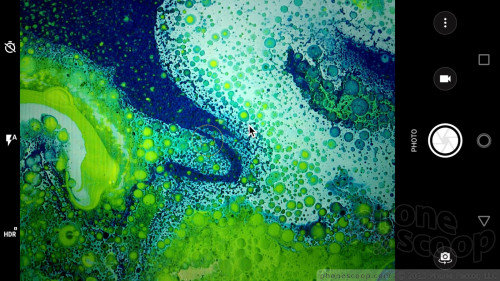
There are three controls on the left side of the screen (timer, flash, HDR) and three on the right (mode, shutter, front camera). I like that both the flash and HDR tools can be set to on, off, or auto. As for shooting modes, the Z2 Force offers auto, video, panorama, depth-effect, black & white, and manual.
The depth-effect and B&W modes are new and unique to the Z2 Force. Both rely on the second image sensor. The depth-effect uses depth-of-field data generated by the two lenses to create in-focus and out-of-focus regions within the photo. Your subject has to be close, within a few feet, and the background has to be at least several feet further away. It works best outdoors, with portraits of people. It's an odd version of the effect and produces a lot of weird haze at the top of images, while keeping most of the bottom half in focus. I've seen this bokeh effect created more effectively from other phone makers, such as Huawei.
Because the second sensor only collects monochrome data, it's perfect for creating true black & white images. It's a simple point-and-shoot mode that only allows you to adjust exposure and focus.
The default is always auto mode. Slide your finger up or down to zoom. Tap to focus and set exposure. Press the shutter button to take standard pictures, or press-and-hold to capture a burst. Swipe from the left side of the screen to access more minor settings such as grid-lines and resolution.
The manual mode lets you take full control over focus, ISO, shutter speed, brightness, and white balance. The controls line the top of the screen and are easy to adjust. It's a shame the shutter only lets you select speeds as slow as one-third of a second; that's hardly long enough to get creative or take really great night shots. There's no time-lapse mode, nor is there any sort of GIF maker.
Motorola moved the slow-motion video capture tool to the video section of the app, which makes sense. The slow-mo tool is easy enough to use.
The layout of the camera app is fine for novices to use effectively, and flexible enough in manual, B&W, or depth modes to unleash your inner Ansel Adams or Annie Leibovitz. The Z2 Force's processor and RAM combo ensure quick performance of the camera, which ran fluidly while I reviewed it.
Photos/Video
The Z2 Force has dual 12-megapixel Sony IMX 386 sensors: one captures full color images and the other captures monochrome images and helps with contrast and focus. Each sensor has a lens with an aperture of f/2.0 with both laser autofocus and phase-detection autofocus.
I found the phone takes very sharp pictures with good contrast, exposure, and white balance. The majority of images were above average in terms of quality. The additional information gathered by the second sensor helps give color pictures that extra bit of wow. I was pleased with the performance of the HDR setting, which truly helped deliver amazing levels of contrast.
There's no doubt this phone outpaces the lower-end Z2 Play, which has a single sensor, and yet it falls just short of what Apple, LG, and Samsung have done with their own flagship devices. The Z2 Force delivers laudable results, even if they're not the absolute best.
The front-facing camera has a 5-megapixel sensor and can capture wide-angle panoramas. The two-tone LED flash truly helps make Snapchat and Instagram selfies pop when you're shooting in low light. On its own, the selfie cam does well, balancing exposure, focus, and white balance. The beautification tool can help erase your skin's imperfections if you wish.
As for video, the main camera shoots footage up to 4K and the selfie cam can snag 1080p. The 4K stuff looks great, if you have a monitor capable of displaying it, but I think most people can stick with 1080p when shooting video. The samples I captured with the Z2 Force were clean, sharp, and colorful.
You can certainly rely on the Z2 Force to capture those everyday moments as well as vacations and other important events.
Moto Voice
The Moto App contains a third tool called Moto Voice. The tool sort of mimics Google Now in that you blurt out voice commands and the Z2 Force obliges. It takes several minutes to walk through the tutorial. Rather than say "Hey Google" or "OK Google" you simply say "Show me my…" to see your calendar, your call log, and so on. It works pretty well for opening apps and seeing basic personal info, but Moto Voice can't complete more complex actions such as composing a message. It will react when the phone is locked.
Honestly, just use Google Assistant, which is on board and fully functional.
Moto Mods
Just a quick word on Moto Mods: The Z2 Force is of course compatible with the existing and new Mods from Motorola. We have several of the latest on hand and are testing them separately. The Z2 Force interacts with Moto Mods perfectly and we look forward to sharing our thoughts on the Motorola 360 Cam Mod soon.
Wrap-Up
What makes the Z2 Force stand apart from the competition, from Motorola's own smartphones, and who is this phone for?

As a flagship handset, the Moto Z2 Force is the only one in the market that is compatible with modular accessories; Apple, LG, Samsung, and others don't support such an ecosystem. The Z2 Force is also one of the only flagship smartphones with a nigh unbreakable screen. If you want to buy into Moto Mods and desire a toughened-yet-sleek smartphone, the Z2 Force fits the bill.
The Z2 Force is Motorola's best performer when it comes to photography, app speed, download speeds, and virtual reality. The dual-camera array gets the job done, the LTE radio and processor are top notch, and the quad HD screen looks great. These all put the Z2 Force way ahead of the Z2 Play.
Battery life is an issue. Not only does the Z2 Force fall short of the G6, S8, and iPhone 7, it falls well short of the Z2 Play. Motorola's TurboPower Mod helps, but a phone this pricey shouldn't require an additional purchase just to keep up with the competition. I'm also disappointed that Motorola considers its internal nano coating sufficient protection when competing devices are all fully waterproof.
The Z2 Force is not cheap. Motorola is selling it for $720. Carriers have their own pricing schemes, with average monthly costs coming in at about $30. If you're going to go for it, be sure to take advantage of Motorola's Mod offers, such as the free projector or discounted JBL speaker or battery.
If you have either of last year's Z-branded handsets and are looking to upgrade, the Z2 Force is a fine option. You'll be able to use your existing Moto Mods and gain better performance in almost every respect. If you prioritize battery life — without Mods — then perhaps the lower-end Z2 Play is a better option, though you'll lose screen resolution, speed, and camera performance along the way. If you're incredibly style conscious, perhaps options from LG and Samsung are worth considering.


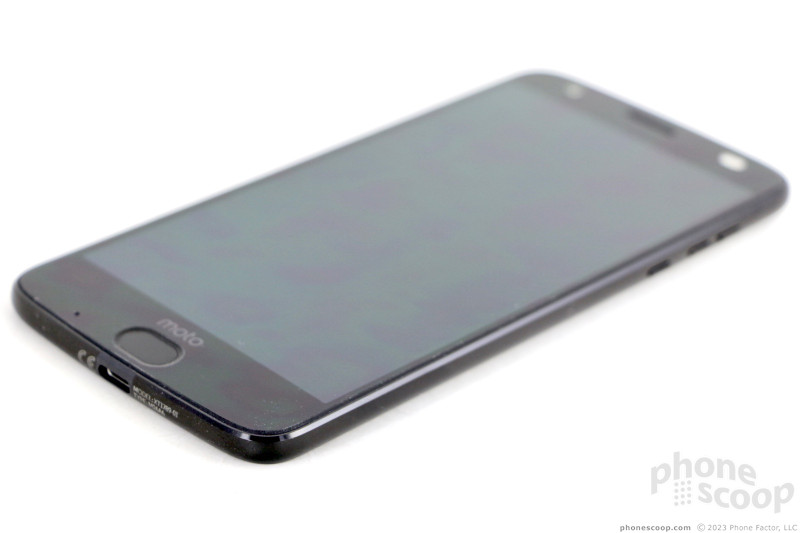

















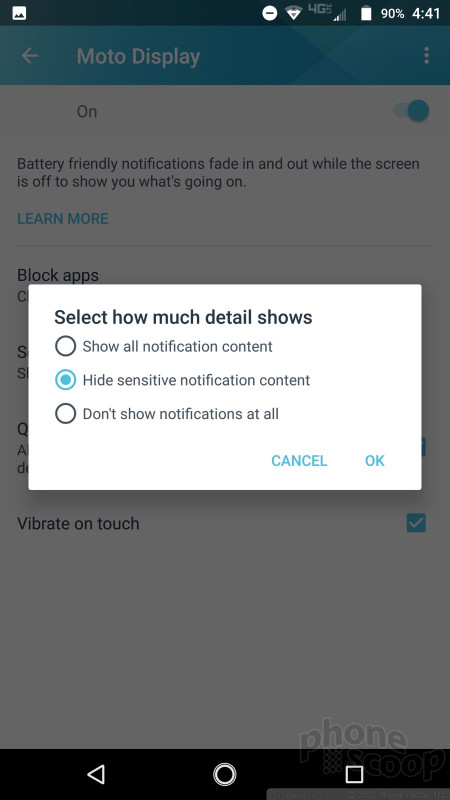





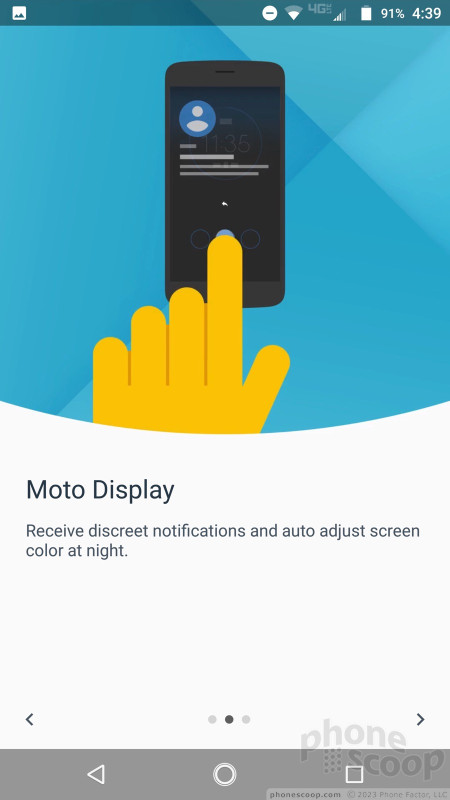





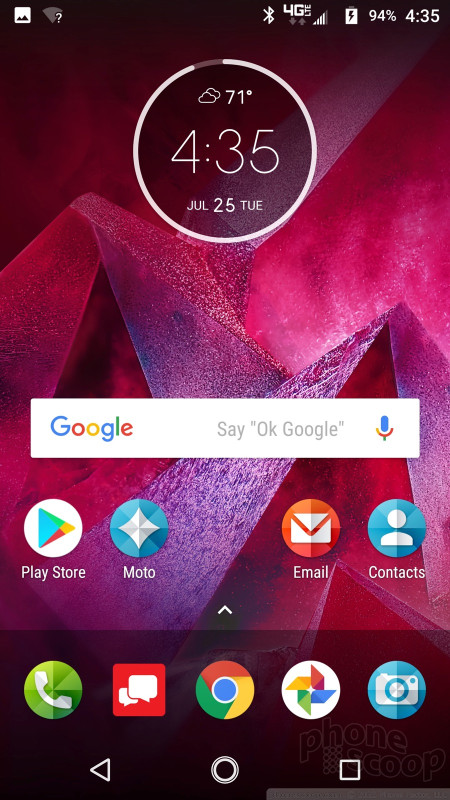









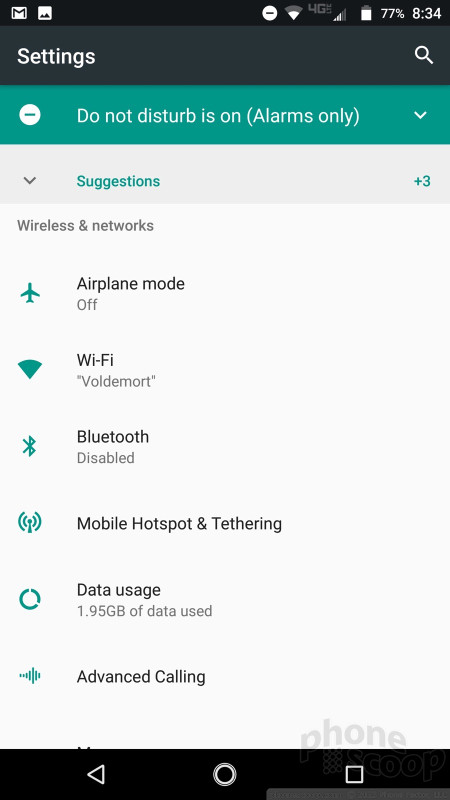






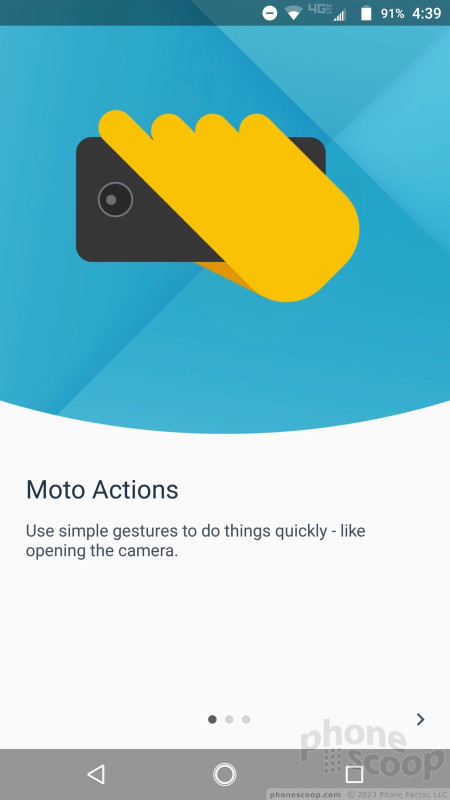



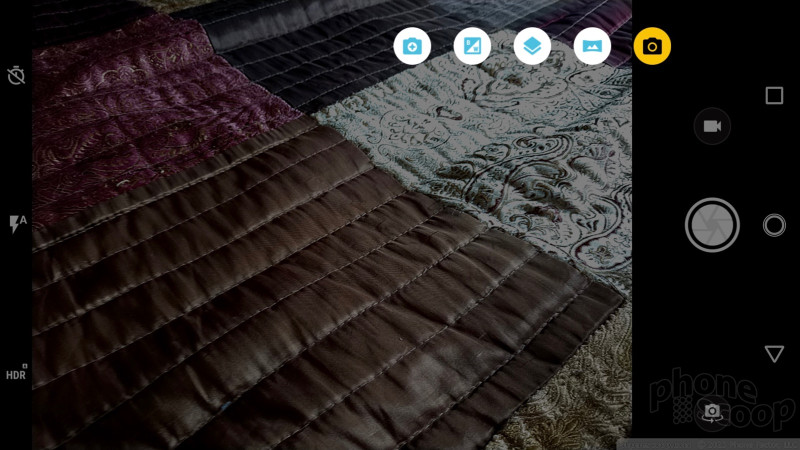














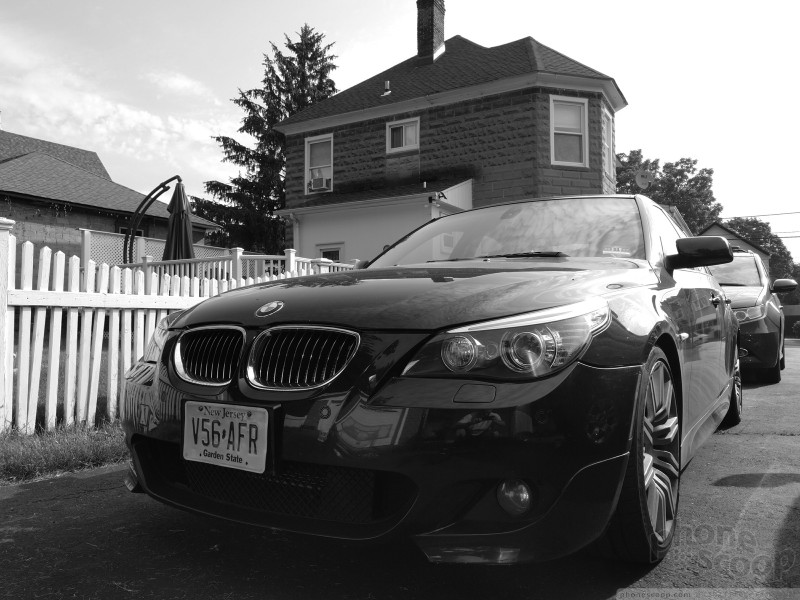





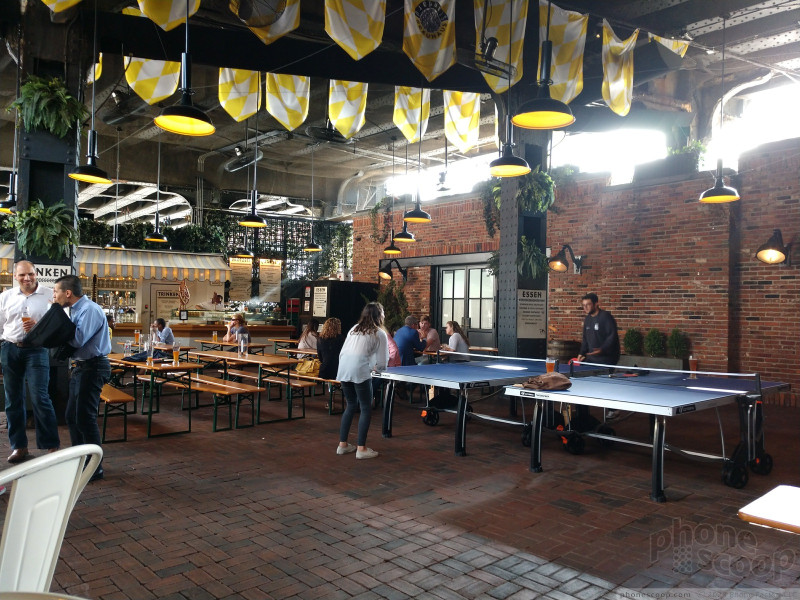















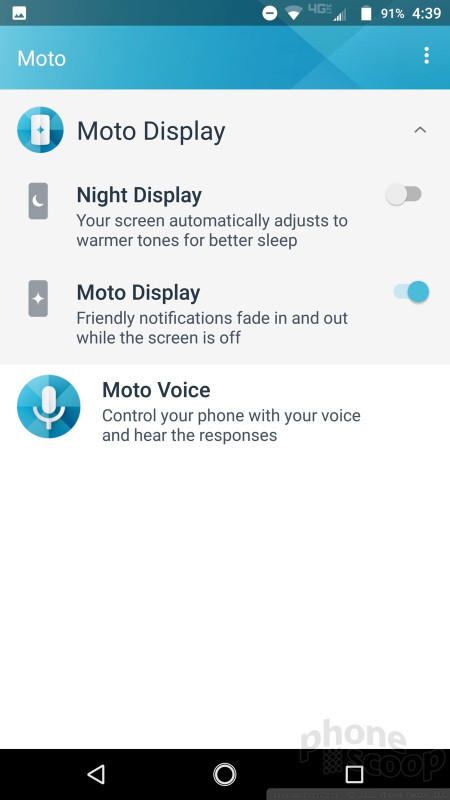







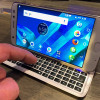 Hands On with the Livermorium Keyboard Slider Moto Mod
Hands On with the Livermorium Keyboard Slider Moto Mod
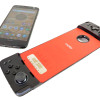 Review: Motorola Moto Gamepad for Moto Z2 Force
Review: Motorola Moto Gamepad for Moto Z2 Force
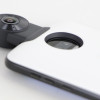 Review: Motorola 360 Camera
Review: Motorola 360 Camera
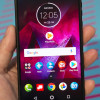 Hands On with the Moto Z2 Force
Hands On with the Moto Z2 Force
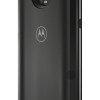 Motorola Updates 5G Moto Mod, Adds Z2 Force Compatibility
Motorola Updates 5G Moto Mod, Adds Z2 Force Compatibility
 Motorola Moto Z2 Force
Motorola Moto Z2 Force





